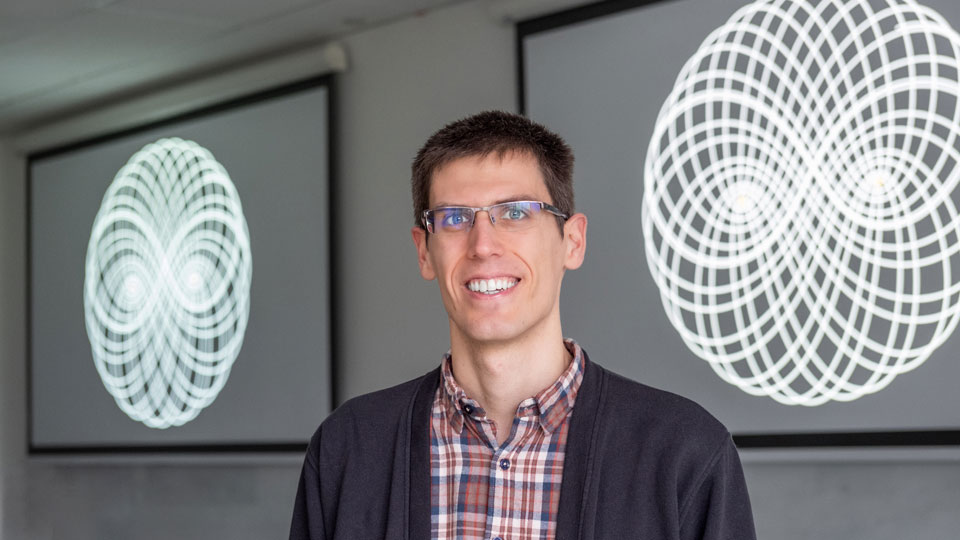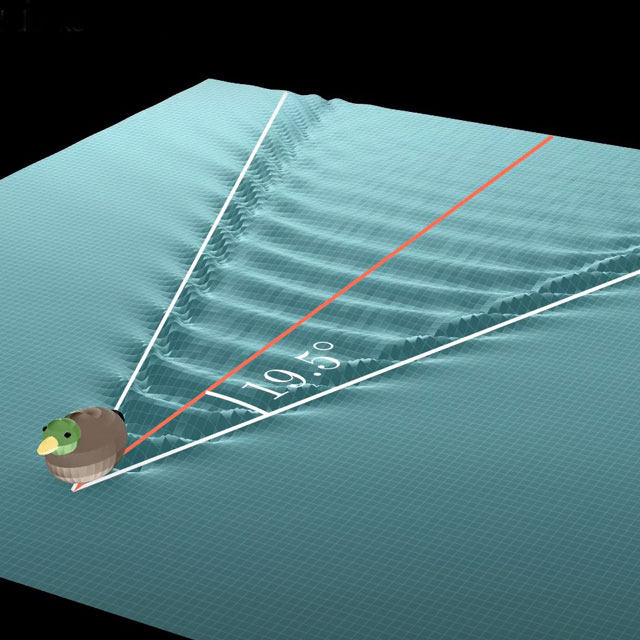Dr Vermeeren works in the field of Mathematical Physics – a disciple that uses mathematics to understand natural phenomena. Or, to use his words, he explores “the fascinating maths in the world around us”.
This branch of mathematics can explain why the wake formed by a duck swimming across a pond always resembles that of a ship traversing a bay and why a rainbow is inevitably a colourful arc – not another shape of reflected sunlight.
His five-year Fellowship will allow him to continue his exploration of a recent development in an area of Mathematical Physics called Integrable Systems and continue his important outreach activities.
Explaining the world, using the language of maths
Whenever something moves or changes, it can be explained mathematically using a differential equation. Solving a differential equation means determining the state of the object – or “system” – at any time in the future.
For many differential equations this is impossible. The systems they describe have complicated behaviour.
To take a nautical example, picture messy waves on a stormy sea. Their long-term movements are very hard to calculate, and it is impossible to write a formula that describes or predicts their future state.
Integrable systems – Mats’ specialism – are exceptions to this. They are differential equations that can be solved and represent dynamics that look orderly.
To return to the water, imagine a wave on a canal produced by a boat that has suddenly stopped – it keeps traveling forward in a sedate and predictable way.
This orderly behaviour is caused by some hidden mathematical structure within the differential equation. A recently developed way to find and describe these hidden structures – inspired by ideas from Physics – is the theory of Lagrangian Multiforms. This is the core topic of Mats’ research programme.
Translating hard maths into plain English
Mats readily acknowledges that to everyone who is not a mathematician, descriptions of the technical details of his work are most likely “gibberish”.
However, alongside his research, he is a keen advocate for outreach. His videos, blog posts and many of his articles are written for an interested, but not necessarily expert audience.
He often talks in schools and welcomes students to campus to solve puzzles, problems and learn about elements of mathematics not usually covered by the curriculum.
Of his success, Mats says: “I’m thrilled and honoured to be awarded this Fellowship. It allows me to take a long-term view of my research in Lagrangian multiforms – to secure its place as a core concept of integrable systems and to develop its application in various aspects of mathematics and physics.
“It also means that I can increase my activities in outreach and refine my skills as a maths communicator.
“I want to inspire future mathematicians and scientists. I believe that introducing young people to the creative fun of maths is key to stimulating their interest and helping them realise their potential.
“I’m keen to change the perception of mathematics. Many current challenges are scientific matters. To have effective and inclusive discussions about them, it is essential that everyone has some level of understanding of – and trust in – science and mathematics.”
Visit Mats’ YouTube channel to learn how rainbows are formed and the maths of swimming ducks.

